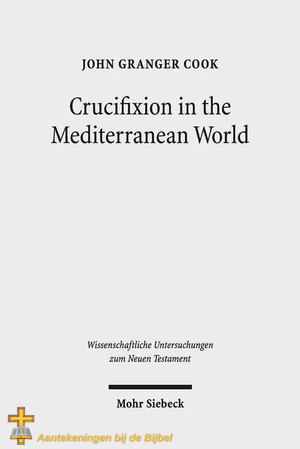
welke resulteren in allerlei aantekeningen.

To understand the phenomenon of Roman crucifixion, John Granger Cook argues that one should begin with an investigation of the evidence from Latin texts and inscriptions supplemented by what may be learned from the surviving archaeological material (the Arieti fresco of a man on a patibulum horizontal beam], the Puteoli and Palatine graffiti of crucifixion, the crucifixion nail in the calcaneum bone from Jerusalem, and the Pereire gem). This evidence clarifies the precise meaning of terms such as patibulum and crux (vertical beam or cross), which in turn illuminate the Greek terms and texts that describe crucifixion. The author traces the use of the penalty by the Romans until its probable abolition by Constantine and its eventual transformation into the Byzantine punishment by the furca (the fork), a form of penal suspension that resulted in immediate death. Rabbinic and legal sources are not neglected. The material contributes to the understanding of the crucifixion of Jesus and has implications for the theologies of the cross in the New Testament.
| Titel | Crucifixion in the Mediterranean World |
| Auteur | John Granger Cook |
| Uitgever | Mohr Siebeck |
| Jaar Verschenen | 2014 |
| Taal | en |
| Pagina's | pp. 522 |
| ISBN13 | 9783161531248 |
| Onderwerp | Kruisiging |

Zie de huisregels welk commentaar wordt opgenomen!